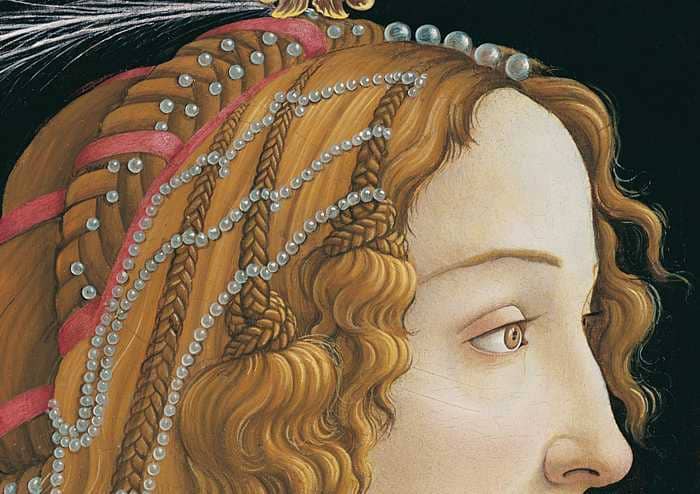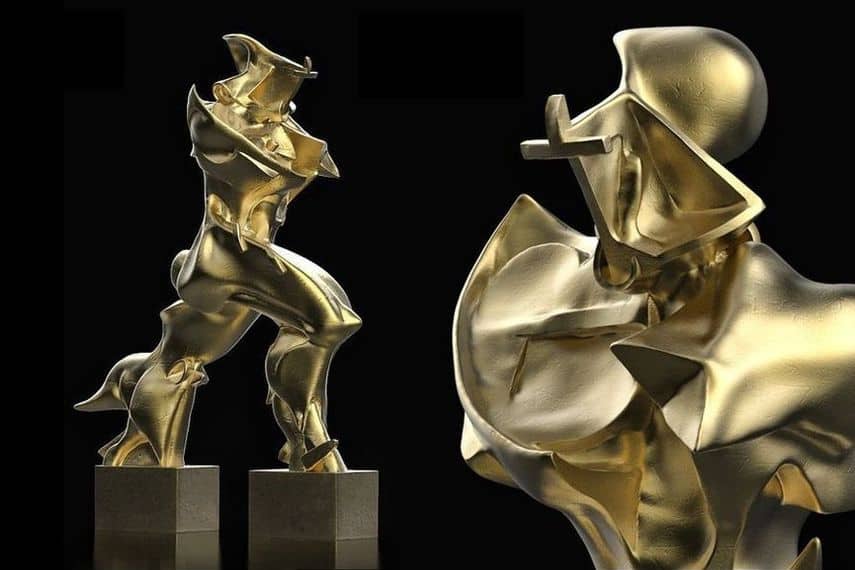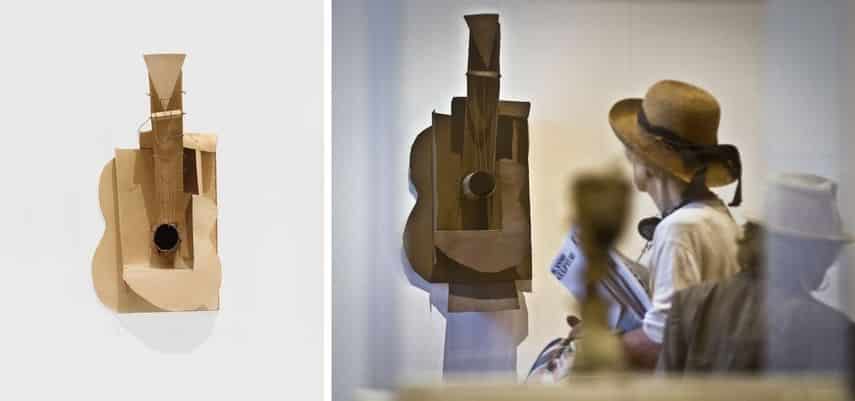What Artist Used a Glass Plane to Draw
"He who works with his hands, and his caput, and his heart, is an artist" – St. Francis of Assisi
Throughout art history, people have been using various materials to express themselves. Artists have always called concepts and techniques that fit their skills and artistic expression. This quest started with pigmented pulverization used for cartoon on Altamira cavern walls and has come a long way to implementing modern engineering in creating art.
Our ultimate guide on art mediums will inform you about various fine art materials people have used over time. It will also point out what yous should focus on when determining a perfect medium of choice for your fine art. The following article will help you choose the fine art medium that all-time suits you, whether you are starting an art career, selecting an fine art schoolhouse, or are wanting to reinvent your artistic style.

Unlike Types of Traditional Painting and Drawing Styles
Because of the wide variety of painting techniques and drawing styles, painting mediums and cartoon tools need their own section in whatever comprehensive guide on different art mediums. There are a multitude of surfaces to pigment and draw on.
Tempera
Tempera is a term that stands for paint mixed with cohesive materials, such as egg yolk, and describes the painting style and the art medium. This material makes tempera fast-drying and a long-lasting art medium, with evidence of tempera artworks dating back to the 1st century A. D.
Oil Painting
This is a traditional fine art technique that started being recognized as an artistic medium in 15th century Europe. Oil paints, as the name says, usually incorporate linseed oil that makes them dry slower than others. The prolonged drying time is the reward of using oil painting equally an fine art medium. Information technology offers artists an opportunity to alter some segments of their work or paint a dissimilar scene altogether by adding another layer of paint onto the canvas.
Acrylic painting
Regarding drying times, acrylic paints dry fast, as opposed to oil painting, and once they dry, they become water-resistant. However, you can dissolve acrylic paint with h2o before y'all apply it on sheet to achieve the result of gouache or watercolors. Painting with acrylic allows artists to add layers or textures to their artwork, enhancing glossiness and giving it depth. Or they can add water to achieve a matte effect in their paintings.
Watercolors
Using watercolor pigment as an fine art medium can be challenging for beginners in the art world. Many artists honey watercolors because of their seemingly endless color palette. Once you apply these on newspaper, there is little you tin can exercise to modify the effect. Notwithstanding, watercolors add a translucent quality to paintings and are ideal for capturing the change of light.
Charcoal
This is one of the oldest art mediums used for drawing. Charcoal sticks are made of powdered organic material bound with wax or gum. You can utilize charcoal to make either pale lines or strong, expressive ones. This artistic material is hands erasable, and then it is recommended to apply some fixatives on charcoal drawings to ensure the artwork'south longevity.
Pastels
These art mediums consist of paint pigment similar to the ones in oil paints and a binding textile. Using pastels in drawing and painting became popular in the 18th century. Artists can use a combination of different pastels depending on the effect they want to achieve. For example, soft pastels are cracking for blending, while you lot use hard pastels to create sharp outlines or sketch the larger composition. There are also pan pastels, a modernistic version of this art medium that is practical with a soft sponge. Y'all can choose to piece of work with oil pastels that provide an intensity of colors, or water-soluble pastels if you lot want thinner layers of semi-transparent colors that blend easily.
Chalk
Here is another organic textile artists have been using for cartoon since the Paleolithic era. Creative chalk usually comes in three versions, black, white, and sanguine, depending on the textile. Black chalks incorporate soft blackness rock, whites are made from limestone, and sanguines contain ruby-red ochre. Chalks were originally used for sketching but became an independent art medium during the Renaissance.
Graphite pencils
These have been in use equally an art medium since the 17th century France. You can employ graphite for sketching, outlining, or shading. There are graphite pencils of varying hardness you can use in creating fine art. This is a convenient fine art medium because it allows yous to remake your work by erasing parts of a cartoon or an entire piece of work.
Colored pencils
Everyone used colored pencils for drawing and coloring equally a child, making your first attempts to express yourself creatively. Colored pencils take come a long way from beingness a child'southward toy to becoming a professional art medium. They gained considerable attention and respect in the modern art globe considering of the numerous advantages they offer. Colored pencils' artwork is expressive, deep, and luminescent. At the aforementioned time, this art medium gives artists an opportunity to make photographically realistic pieces of fine art.
Pen and ink
This is as well a familiar art medium where you use a pen for outlining and adding colour in art forms like pen fine art or hand lettering and calligraphy. You lot can choose between different types of pens, like graphic pens, fountain pens, or drafting pens, depending on what you lot desire to practice with information technology. Ink is a powerful simply unforgiving fine art medium, so yous really need to master ink cartoon skills before you start creating with it. What makes pen and ink artworks so expressive is the ratio of the blank spaces and the ink-filled spaces on paper.
We are going to move on now and explore what other types of art mediums artists have used throughout history to limited their ideas and emotions.

The Evolution of Three-Dimensional Art
The almost common definition of three-dimensional artwork is a piece of fine art that can be observed in dimensions of meridian, width, and depth. Since the beginning of fourth dimension, people have been creating sculptures using diverse concepts, techniques, and fine art materials. Installations, performance art, and decorative art, also fall into this category along with sculpture, which is the epitome of three-dimensional fine art.
The oldest piece of three-dimensional art is a sculpture of Venus of Berekhat Ram. This stone-carved effigy dates back to 230,000 years B.C. It represents a symbol of female fertility and is one of the numerous similar figures scattered around Europe. Information technology is believed that these commencement examples of prehistoric sculptures had significant roles in rituals and ceremonies.
Three standard sculpture types that the fine art world recognizes are:
- A costless-continuing sculpture that y'all tin can await at from whatsoever side or angle by walking around it.
- Bas relief is when the shape is carved out so that it stands out slightly confronting the background of the original fabric
- Loftier relief forms are carved out to stand prominently against the background.
The nearly traditional fine art mediums used to create 3-dimensional artworks were wood and stone. Nowadays, you tin employ gimmicky materials, such every bit drinking glass, foam, and plastic, to transform them into a genuine fine art slice. Artists employ numerous techniques to create a three-dimensional interpretation of their artistic vision.
Carving– cutting out pieces of material, ordinarily wood or stone, until you create the desired shape.
Casting– pouring a liquid art medium like atomic number 26 into particularly designed molds to develop parts of a large sculpture.
Modeling– manipulating and transforming soft art materials, similar dirt or plaster, and letting them harden into the desired shape. Contemporary artists also utilise different modeling methods for creating fantastic glass art pieces.
Constructionis a creative process in which artists get together a sculpture by combining various materials and using gum, wire, or welding to keep the elements together.
Modernistic times brought gimmicky variations of three-dimensional art. For example, glass has become a significant art medium used in sculpting, installation, and decorative art. Concepts and techniques used in creating glass artwork determine their type. Many drinking glass artforms involve the utilize of hot drinking glass techniques, such as blown drinking glass, sculpted glass, and cast glass. As the name indicates, artists piece of work with hot glass, shaping it past blowing or casting it into molds.
The warm glass artistic procedure involves heating the glass in an oven or a kiln. Two dominant techniques to reshape warm glass are slumping and fusing.
You lot can also work with cold glass to create pieces of art. You can grind, polish, or engrave drinking glass to go the desired effect. There is also an etching technique you can utilize in glass art to change the glass texture. Y'all tin achieve this by sandblasting or acid etching.
Another of these contemporary versions is installation art, where artists combine audiovisual effects and various materials to address significant issues that concern them. Art installations may focus on politics, human rights, or the surround, for example. The virtually common is light installation fine art, where low-cal and sculpture blend to create a magnificent artistic effect.
Artists involved in performance fine art employ their bodies or bodies of other participants as a perfect medium to express their core values and convey their unique message to audiences.

Mixed Media Techniques and Anarchistic Artistic Expression
Art continues to evolve, bringing numerous avant-garde artistic movements to the scene. Artists who want to differentiate themselves seek unconventional art mediums that will express their aesthetic principles and defy deeply-rooted definitions of art.
Mixed media art derives from the idea that you tin can use anything and everything for creating an amazing slice of art. Picasso and Braque first used various materials and everyday objects to created instinctive collages as astonishing examples of mixed media fine art.
- Collages are art pieces you make by combining various materials, similar newspaper, cloth, newspaper clippings, and everyday objects to create unique artwork. You tin fifty-fifty create a digital collage from art online.
- Assemblage is a three-dimensional version of mixed media fine art created by arranging unlike objects and materials on a specific surface. Artists similar Jasper Johns and Robert Rauschenberg adopted it as an anti-artful approach to making aggregation art which became widely used in the 1950s and 1960s.
- Found objects are a mixed media form where artists utilise everyday objects and transform them into fine art pieces by putting them into a specific artistic concept.
- Altered books technique involves physically irresolute a volume and using information technology as a medium in an artistic procedure. You lot may cut out pages of a book to change it, or y'all tin can use cut pages as material for separate artwork.
- Fine art journaling represents a way to enrich your record of different events, memories, and thoughts by adding the artistic bear on to it. You can employ a wide variety of fine art concepts and techniques in a mixed media art journal, or yous can step up your game and start with mixed media journaling, also called junk journaling. This version of art journaling incorporates different items, like postcards, concert tickets, washi record, decorative paper, or pictures from magazines. Yous can use diverse recycled items as art journal prompts. You tin can commencement with digital art journaling if yous are an ardent fan of digital technologies and are exploring vast possibilities of implementing technology in creating art.
Photography as an Art Medium
Always since its invention, photography has had a significant impact on the fashion people perceive history and everyday life. This powerful medium preserved some captivating moments in fourth dimension to mark periods of groundbreaking social changes.
Technology development has provided people with numerous possibilities to express their artistic principles through photography. Artists have an opportunity to touch the terminal presentation by choosing unlike cameras, lenses, or films and setting parameters for framing and timing before they accept a shot. The photography equipment and techniques used in the artistic process rely heavily on the subject matter, tone, and the original impression the artist wants to accomplish with their work. For example, portrait artists who focus on capturing single subjects will opt for larger cameras with shallow depth of field to keep the focus on the discipline. Mural photographers will choose quite the opposite photographic camera and technique.
The aforementioned goes for choosing to work with blackness and white rather than colors. Black and white photography leaves a long-lasting impression by bringing lines, texture, and tone into the limelight.
- Documentary photography aims to capture significant moments in history or everyday life that will faithfully describe an era. This type of photography is closely related to photojournalism and plays a significant role in pointing out burning social bug.
- Mural photography originated from landscape painting. Here, photographers focus on the environs, takingpictures of natural and urban surroundings and using framing and cropping methods to create extraordinary compositions.
- Portrait photography has been around since the invention of the daguerreotype. This artistic photography style replaced portrait painting every bit a much faster and affordable way of capturing someone's epitome. The technological progress enabled artistic photographers to become out and use natural surround and light to create mesmerizing portraits.
- Nude photography dates back to the invention of this art medium, and nude photographers originally wanted to evoke the classical ideal of beauty by presenting their subjects equally nymphs or ancient heroes. As opposed to this, avant-garde nudes presented the homo trunk as an independent entity liberated from all art conventions.
- Digital photography has appeared with the rise of digital technology, offer an array of new possibilities for creating fantastic fine art pieces. Now photographers can create, edit, and retouch their piece of work with the help of advanced programs and apps.
Advanced Engineering science Provides Extraordinary Art Mediums
These are times of unprecedented progress in digital technology. The thought of using new computer technology in creating art appeared in the sixties with the outset examples of digital art. Afterward, some tech and art enthusiasts started incorporating digital technology into their artistic installations. But the groundbreaking result that has opened new worlds to digital artists is the appearance and rise of the net in the nineties. This enabled artists to create their art and nowadays information technology to global audiences using diverse social media platforms.
Nowadays, the modern art scene is booming with artists that include digital technology innovations into their art installations to limited their concern about significant issues. Some artists employ lasers to create fantastic multimedia projects that present the perfect combination of light and audio. Others use 3D printers to embody their creative visions and create memorable art performances. Therefore, advanced technology is reinventing the art scene by introducing extraordinary art mediums every bit a means of artistic expression.
Terminal Words
Nosotros compiled this consummate guide on dissimilar mediums you can use in creating your fine art to nowadays a short recapitulation of various art mediums throughout art history. Nosotros likewise focused on essential questions you need to answer earlier you kickoff searching for an ideal medium for your artwork. Whether you lot are making your first steps in the world of art or are an achieved artist seeking a fresh artistic expression, you need to choose your medium wisely.
The materials y'all will apply to create works of art should reverberate your unique idea and original message that you want to transport to the world. Besides, brand sure that y'all use materials you lot relish working with considering art creation should bring joy and satisfaction to the artist, not make them struggle all the time. With this in mind, yous can choose the art medium that will fit your artistic identity.
Source: https://www.artdex.com/the-ultimate-guide-on-different-art-mediums/
0 Response to "What Artist Used a Glass Plane to Draw"
Post a Comment